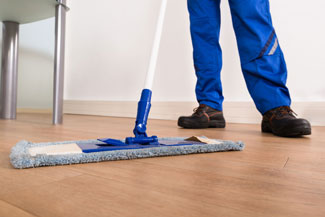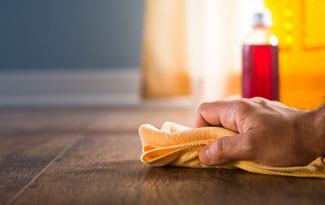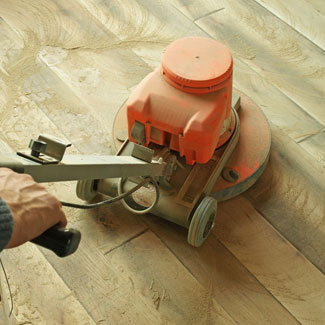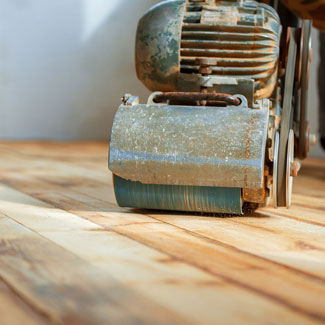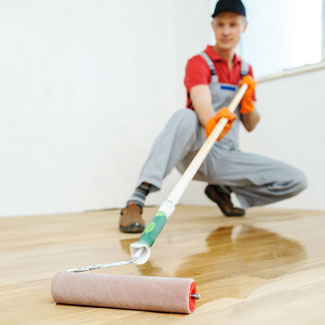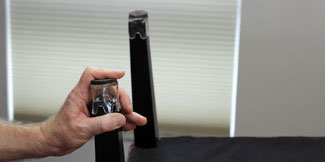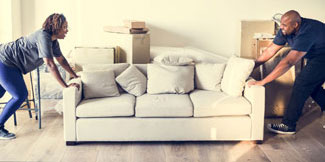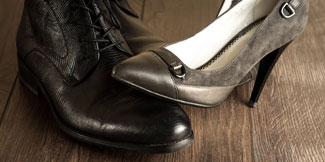Hardwood Maintenance
MAINTAINING YOUR HARDWOOD REQUIRES KNOW-HOW.
Once installed, your hardwood floor will look beautiful, but consistent and correct maintenance will ensure it remains that way.
ENTRANCES ARE YOUR FIRST LINE OF DEFENSE
Place walk-off mats or area rugs at each entryway to collect dirt that might be tracked in. These tiny particles act like sandpaper and will scratch your floor. Be sure to avoid rubber-backed or non-ventilated mats or rugs, as they can damage your floor. Instead, use mats or rugs made especially for hardwood floors and remember to shake them out regularly. In addition to entryways, remember to place mats in any areas where water may be splashed.
INVEST IN THE RIGHT TOOLS.
Buy a quality broom and sweep your new floor regularly. Use a vacuum cleaner without a rotating brush to clean the areas between planks and other hard to reach areas. Make sure your mop is designed for wood foors. Once dirt and grease are gone, buffing can help restore the luster of your hardwood floor. We recommend using a terrycloth mop with a rotating head to help with cleaning corners, under cabinets, and along baseboards.
KEEP THESE CLEANING TIPS IN MIND.
Spray a professional wood floor cleaning product to safely remove tough stains and spills without dulling the finish of your floor. A stain pen will be useful in reducing the appearance of scuffs or heel marks. Sticky spots can be cleaned with a damp towel or sponge. All floors with a urethane finish should never be waxed and require cleaners that won’t leave a film or residue. Do not use ammonia cleaners or oil soaps on a wood floor, as they will dull the finish and performance of your floor. These products might also affect the ability to recoat your floor later. Since wood naturally expands when it is wet, never wet mop or use excessive water to clean your floor. Large amounts of water can cause the wood to swell and may cause your floor to crack or splinter.
NEED MORE THAN A LIGHT CLEANING?
If your floor is showing excessive wear beyond normal cleaning, you might need to consider screening and recoating. Screening is used to abrade the polyurethane finish on the floor, then fresh coats of urethane are applied. Screening and recoating will rejuvenate and prolong the life of your hardwood floor.
If the damage to your floor is severe and has gone through the stain of the board down to the bare wood, you can sand and refinish. This should be done if a screening and recoating does not solve the problem. This is an extensive process where the floor is sanded down to the bare wood, restained, and then refinished. If the damage is only in a small area, you may want to see if replacement boards are available to alleviate having to refinish an entire area. Be sure to hire an experienced professional if this process needs to be done.
PROTECT AGAINST TIME.
Cover furniture and table legs with protectors to guard your floor against damage. Take care when moving heavy objects across your floor to avoid scuffing. Stiletto heels can cause dents and scratches that are not covered by your warranty. Trim your pet’s nails or claws regularly to avoid scratches on the hardwood.
MAINTAINING YOUR HARDWOOD REQUIRES KNOW-HOW.
Once installed, your hardwood floor will look beautiful, but consistent and correct maintenance will ensure it remains that way.
ENTRANCES ARE YOUR FIRST LINE OF DEFENSE
Place walk-off mats or area rugs at each entryway to collect dirt that might be tracked in. These tiny particles act like sandpaper and will scratch your floor. Be sure to avoid rubber-backed or non-ventilated mats or rugs, as they can damage your floor. Instead, use mats or rugs made especially for hardwood floors and remember to shake them out regularly. In addition to entryways, remember to place mats in any areas where water may be splashed.
INVEST IN THE RIGHT TOOLS.
Buy a quality broom and sweep your new floor regularly. Use a vacuum cleaner without a rotating brush to clean the areas between planks and other hard to reach areas. Make sure your mop is designed for wood foors. Once dirt and grease are gone, buffing can help restore the luster of your hardwood floor. We recommend using a terrycloth mop with a rotating head to help with cleaning corners, under cabinets, and along baseboards.
KEEP THESE CLEANING TIPS IN MIND.
Spray a professional wood floor cleaning product to safely remove tough stains and spills without dulling the finish of your floor. A stain pen will be useful in reducing the appearance of scuffs or heel marks. Sticky spots can be cleaned with a damp towel or sponge. All floors with a urethane finish should never be waxed and require cleaners that won’t leave a film or residue. Do not use ammonia cleaners or oil soaps on a wood floor, as they will dull the finish and performance of your floor. These products might also affect the ability to recoat your floor later. Since wood naturally expands when it is wet, never wet mop or use excessive water to clean your floor. Large amounts of water can cause the wood to swell and may cause your floor to crack or splinter.
NEED MORE THAN A LIGHT CLEANING?
If your floor is showing excessive wear beyond normal cleaning, you might need to consider screening and recoating. Screening is used to abrade the polyurethane finish on the floor, then fresh coats of urethane are applied. Screening and recoating will rejuvenate and prolong the life of your hardwood floor.
If the damage to your floor is severe and has gone through the stain of the board down to the bare wood, you can sand and refinish. This should be done if a screening and recoating does not solve the problem. This is an extensive process where the floor is sanded down to the bare wood, restained, and then refinished. If the damage is only in a small area, you may want to see if replacement boards are available to alleviate having to refinish an entire area. Be sure to hire an experienced professional if this process needs to be done.
PROTECT AGAINST TIME.
Cover furniture and table legs with protectors to guard your floor against damage. Take care when moving heavy objects across your floor to avoid scuffing. Stiletto heels can cause dents and scratches that are not covered by your warranty. Trim your pet’s nails or claws regularly to avoid scratches on the hardwood.
MAINTAINING YOUR HARDWOOD REQUIRES KNOW-HOW.
Once installed, your hardwood floor will look beautiful, but consistent and correct maintenance will ensure it remains that way.
ENTRANCES ARE YOUR FIRST LINE OF DEFENSE
Place walk-off mats or area rugs at each entryway to collect dirt that might be tracked in. These tiny particles act like sandpaper and will scratch your floor. Be sure to avoid rubber-backed or non-ventilated mats or rugs, as they can damage your floor. Instead, use mats or rugs made especially for hardwood floors and remember to shake them out regularly. In addition to entryways, remember to place mats in any areas where water may be splashed.
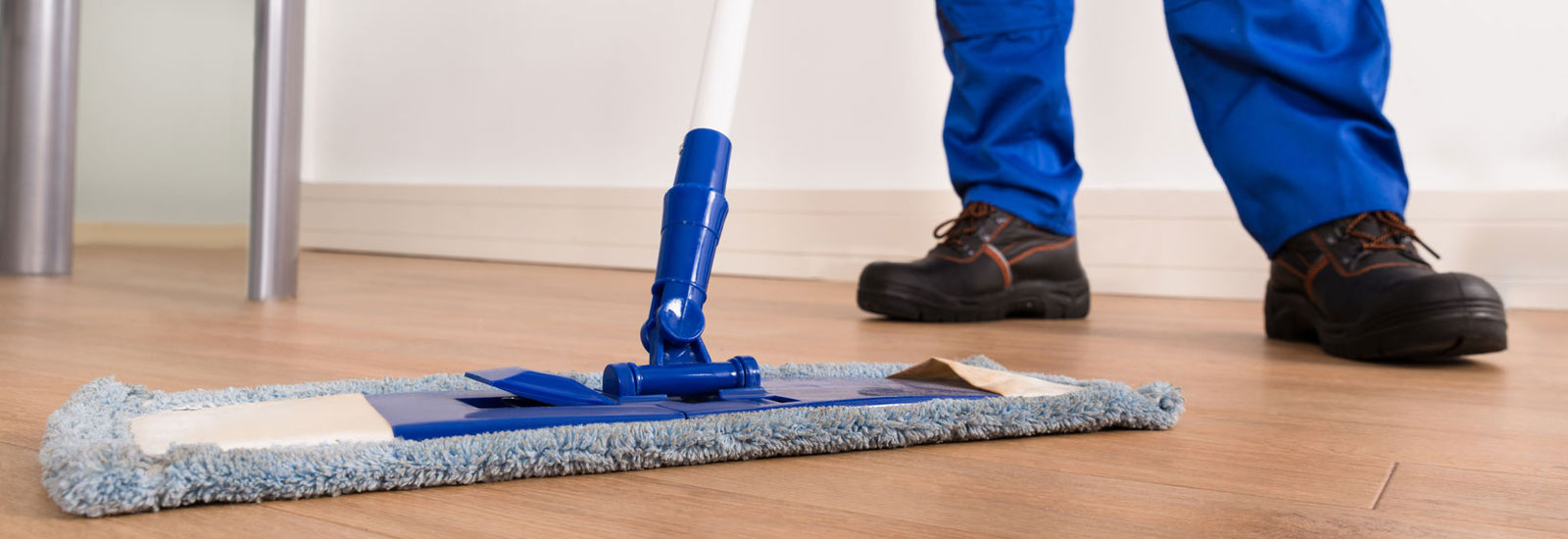
INVEST IN THE RIGHT TOOLS.
Buy a quality broom and sweep your new floor regularly. Use a vacuum cleaner without a rotating brush to clean the areas between planks and other hard to reach areas. Make sure your mop is designed for wood foors. Once dirt and grease are gone, buffing can help restore the luster of your hardwood floor. We recommend using a terrycloth mop with a rotating head to help with cleaning corners, under cabinets, and along baseboards.
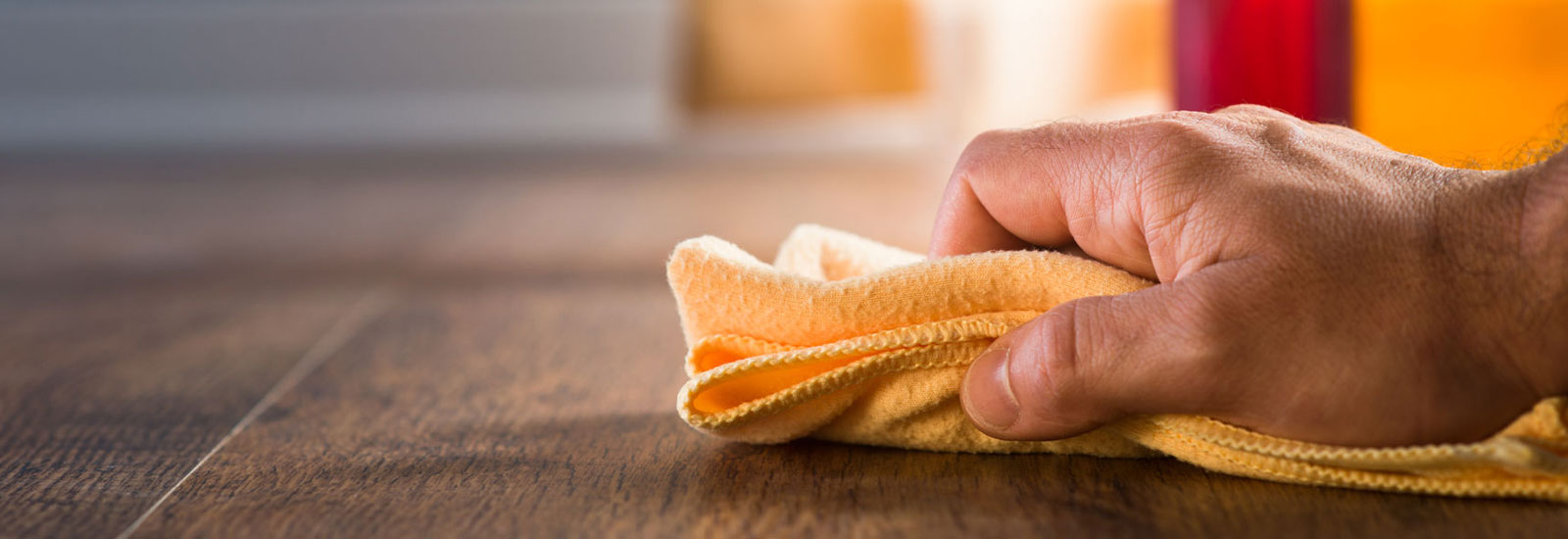
KEEP THESE CLEANING TIPS IN MIND.
Spray a professional wood floor cleaning product to safely remove tough stains and spills without dulling the finish of your floor. A stain pen will be useful in reducing the appearance of scuffs or heel marks. Sticky spots can be cleaned with a damp towel or sponge. All floors with a urethane finish should never be waxed and require cleaners that won’t leave a film or residue. Do not use ammonia cleaners or oil soaps on a wood floor, as they will dull the finish and performance of your floor. These products might also affect the ability to recoat your floor later. Since wood naturally expands when it is wet, never wet mop or use excessive water to clean your floor. Large amounts of water can cause the wood to swell and may cause your floor to crack or splinter.
NEED MORE THAN A LIGHT CLEANING?
If your floor is showing excessive wear beyond normal cleaning, you might need to consider screening and recoating. Screening is used to abrade the polyurethane finish on the floor, then fresh coats of urethane are applied. Screening and recoating will rejuvenate and prolong the life of your hardwood floor.
If the damage to your floor is severe and has gone through the stain of the board down to the bare wood, you can sand and refinish. This should be done if a screening and recoating does not solve the problem. This is an extensive process where the floor is sanded down to the bare wood, restained, and then refinished. If the damage is only in a small area, you may want to see if replacement boards are available to alleviate having to refinish an entire area. Be sure to hire an experienced professional if this process needs to be done.
PROTECT AGAINST TIME.
Cover furniture and table legs with protectors to guard your floor against damage. Take care when moving heavy objects across your floor to avoid scuffing. Stiletto heels can cause dents and scratches that are not covered by your warranty. Trim your pet’s nails or claws regularly to avoid scratches on the hardwood.



